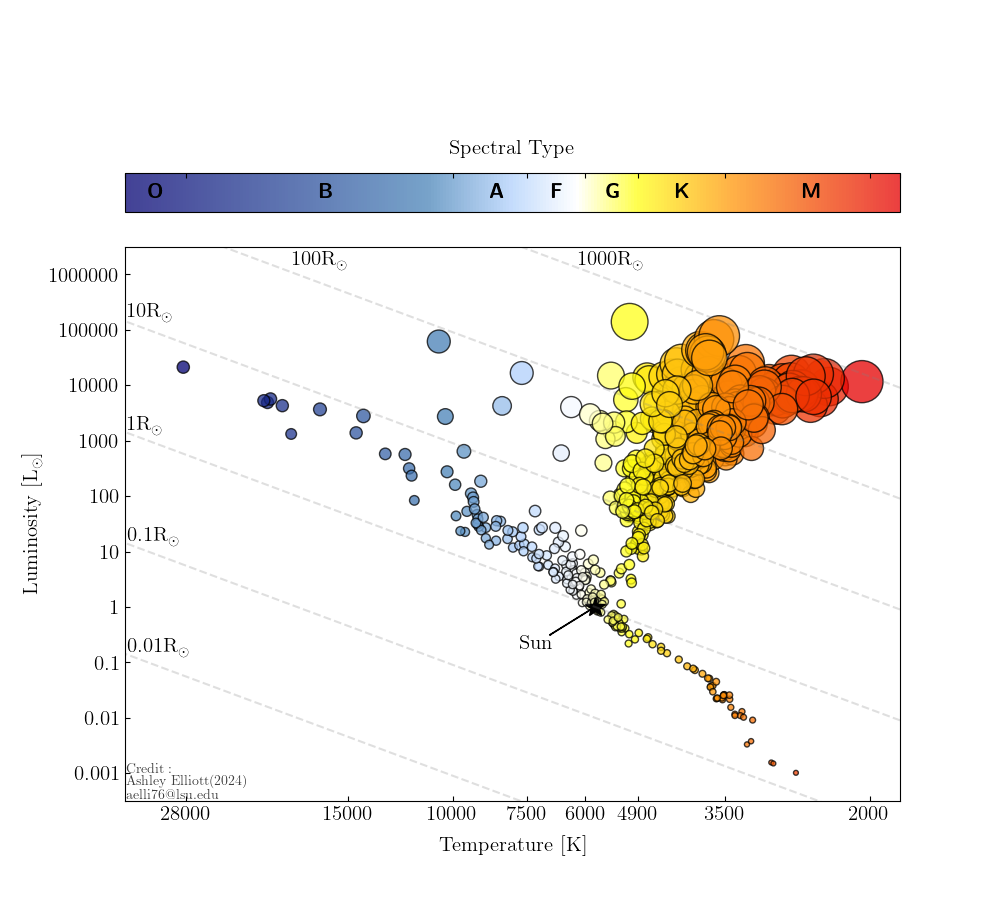
This HR diagram was created by Ashley Elliott (Graduate Student, Louisiana State University).
This diagram consists of stars with published angular diameters measured with either lunar occultations or interferometric methods with a precision of less than 5%. Angular diameters are taken from the Jean-Marie Mariotti Center Measured Stellar Diameter Catalog for values published before 2016, and measurements from 2016 to the end of 2023 are taken from the literature. Where multiple measurements exist of the same star, we took the weighted average of the angular diameter.
Parallaxes are taken from the GAIA catalog for stars fainter than Gmag = 3, and otherwise from the Hipparcos catalog. We kept only stars with a parallax precision < 10%.
Bolometric fluxes are collected from the literature. If a bolometric flux measurement did not exist, we use published values of the star’s bolometric absolute magnitude. The reference papers for the bolometric flux measurements are listed in the accompanying data table.
The final star count for this HR diagram is 693 unique sources. Angular diameter measurement methods for these stars include lunar occultations, intensity interferometry, and long baseline optical/infrared interferometry. The angular diameters range between 0.2 mas to 21 mas, with an average value of 2.5 mas. The parallaxes range between 0.3 mas to 797 mas (corresponding to distances between 1.25 and 3224 pc), with an average of 38.6 mas (245.6 pc). Stellar radii range between 0.15 and 848 Solar Radii (R๏), luminosities range from 0.001 and 139270 Solar Luminosities (L๏) , and temperatures from 2060 and 28330 Kelvin.
See more information on measuring stellar diameters and different versions of the empirical HR-Diagram.



